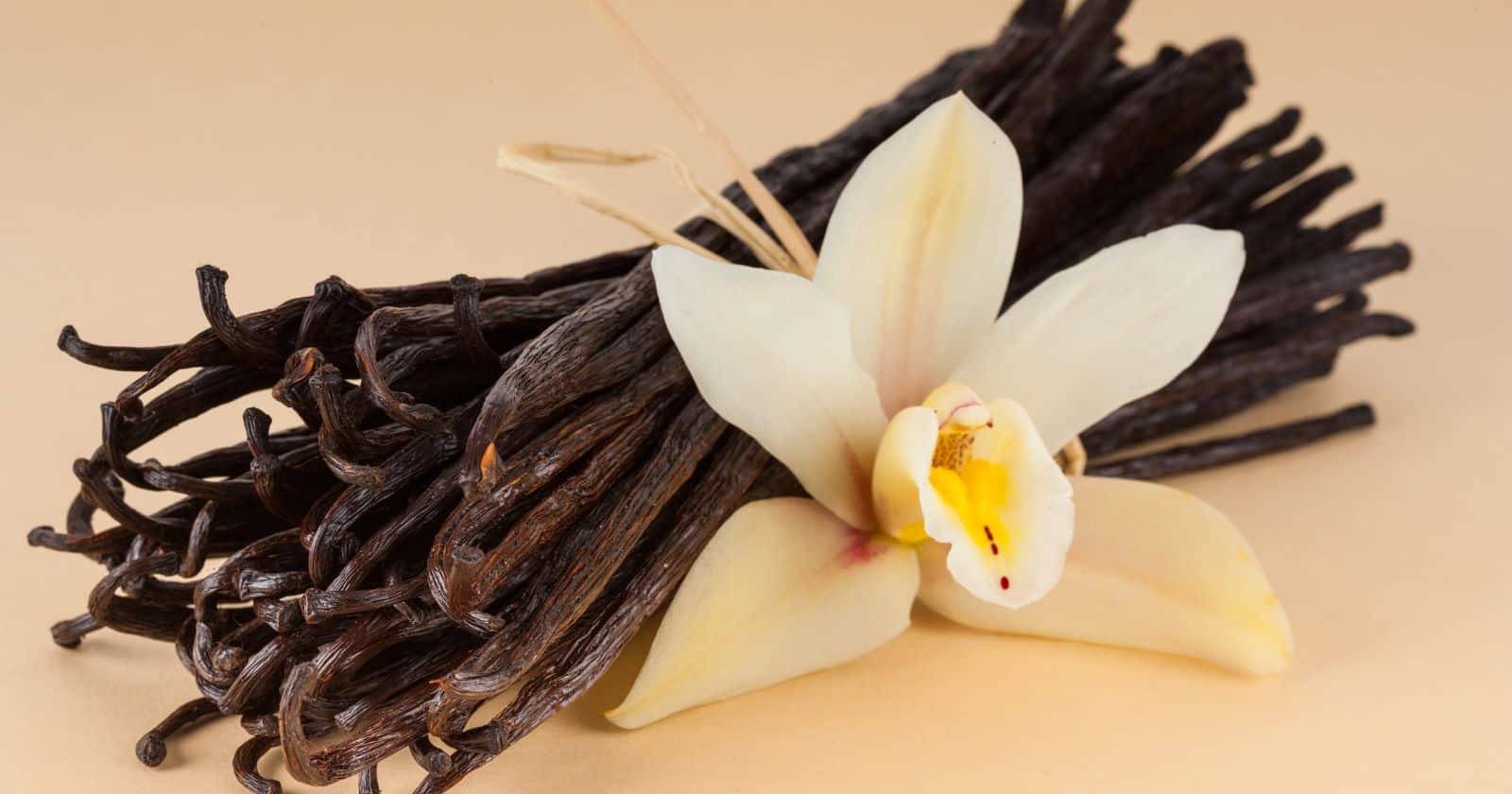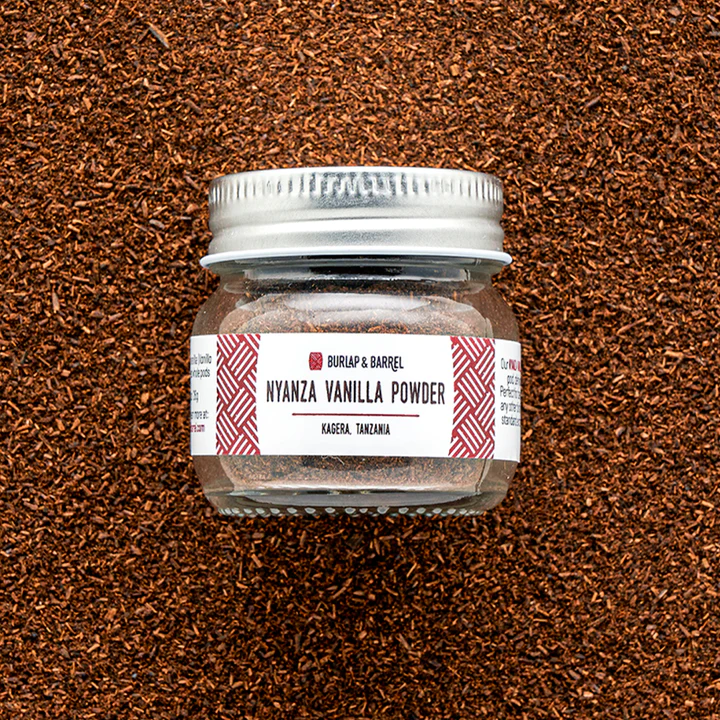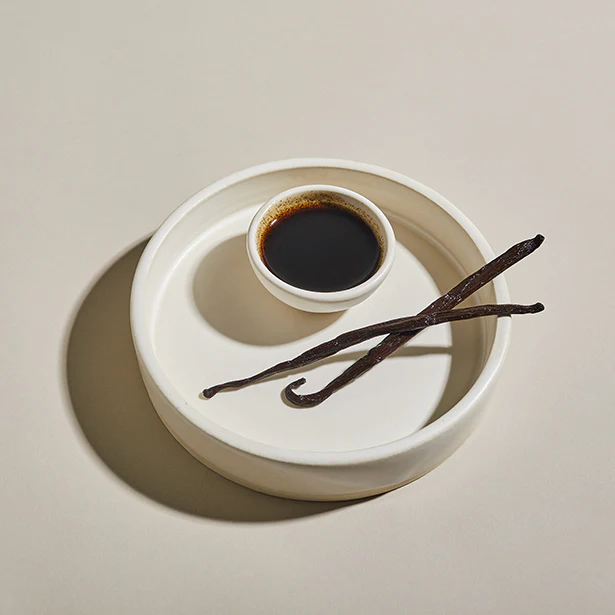Do you love the sweet, creamy, and comforting flavor of vanilla? If so, you’ll be thrilled to learn about this beloved
Whether you’re looking to add a touch of sweetness to your favorite recipes or seeking natural remedies for common ailments, vanilla has got you covered.
Vanilla is known for its anti-inflammatory, anti-bacterial, and anti-cancer properties, making it a powerful ally in promoting overall health and well-being. In addition to its medicinal properties, vanilla is also a versatile ingredient in the kitchen, used in everything from baked goods to savory dishes to beverages.
In this ultimate guide to vanilla, we’ll explore the many health benefits of this
We’ll also delve into the history of vanilla, its cultivation and harvesting, and the different varieties available.
So, whether you’re a seasoned vanilla lover or just discovering this flavorful
What is Vanilla?
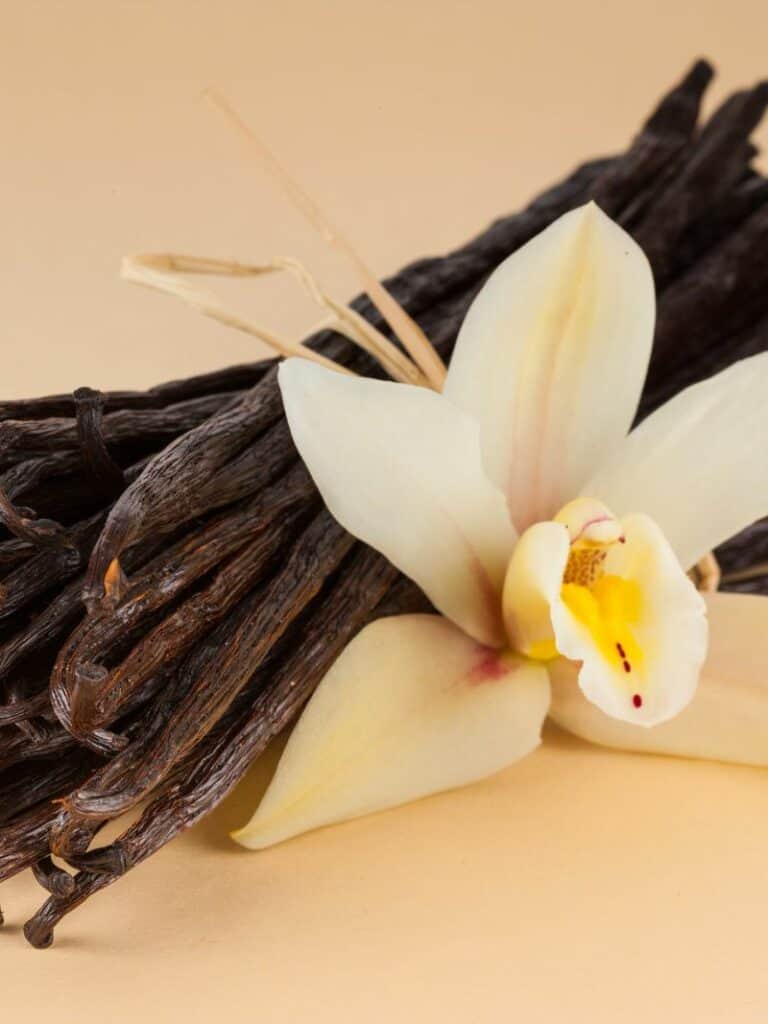
Vanilla is a
It is widely used in baking and confectionery, as well as in perfumes and other beauty products.
The most common form of vanilla is vanilla extract, made by soaking the vanilla beans in alcohol. Vanilla is available in other forms, such as vanilla powder, paste, and sugar.
The flavor and aroma of vanilla can be affected by factors such as the variety of orchids, the growing conditions, and the processing method.
The extract contains numerous important benefits and has an appealing smell and taste. Not only is it delicious, as research suggests, but it also provides many health benefits.
For instance, it can help prevent chronic diseases, protect the heart, balance hormones, stabilize blood sugar levels, reduce inflammation, and more.
Macerating and percolating vanilla beans make vanilla in ethanol and water. After that process, vanillin extract is used as a flavoring in foods, beverages, and cosmetics.
Its main component is vanillin which adds color and flavor to these products. Vanilla extracts are versatile and used for various purposes, from baking to perfumes.
Vanilla has been used by ancient civilizations as far back as 2000 BCE as both a medicinal agent and a flavor Enhancer.
In the past few centuries alone, its use has become much more widespread due to its unique scent and taste that many people find pleasurable.
Today, it continues to be revered for its many culinary uses worldwide, from sweet creations like cakes to savory dishes like curries – each with its distinct flavor profiles.
The History Of Vanilla: From Ancient Civilization To Modern-Day Uses
Vanilla has a long and captivating history, with its use first being documented by the Aztecs and Maya around 2,000 years ago.
It was highly valued for its fragrance in religious rituals and was used to flavor beverages by the Olmeca people on the Gulf Coast of Mexico.
Since then, natural vanilla has been in high demand, and today is one of the most expensive spices in the world.
Aside from being used to reduce anxiety and insomnia, studies suggest that vanilla can help prevent sleep-related eating disorders and improve memory recall and concentration, among other health benefits.
In modern times, we are more familiar with vanilla as a culinary tool to enhance dishes such as ice cream and cookies.
Vanilla also has many therapeutic uses: it can be added to massage oils or candles to create a calming atmosphere, naturally sweetened products like coffee or tea instead of sugar or honey, or added as an ingredient in soaps and cosmetics to provide scent.
The Health Benefits Of Vanilla: What You Need To Know
Vanilla comes with a delightful array of health benefits.
For starters, its calming effect can reduce stress and anxiety in adults and also helps improve brain function.
The soothing aroma of vanilla is also known to be linked with improved cognitive ability.
In addition to these calming benefits, vanilla is packed with antioxidants that can help protect your body’s cells from the damage caused by free radicals.
Here are some of the potential health benefits of vanilla:
- It contains antioxidants that protect against cell damage and reduce inflammation.
- It may have antibacterial and antiviral properties that help fight infections.
- It could lower cholesterol and improve heart health by reducing triglyceride levels.
- It may promote relaxation and reduce anxiety thanks to its soothing aroma
- It might aid digestion by reducing inflammation and preventing the growth of harmful bacteria in the gut.
- It could have anti-cancer properties, although more research is needed to confirm this effect.
- Its antioxidant and anti-inflammatory properties may improve cognitive function and memory.
Vanilla Varieties
There are several varieties of vanilla, each with its unique flavor and aroma.
Here are some popular vanilla varieties:
Bourbon Vanilla

The most common type is Bourbon vanilla, also known as Madagascar vanilla, which comes from Madagascar and has a sweet, creamy flavor with hints of caramel.
Tahitian vanilla
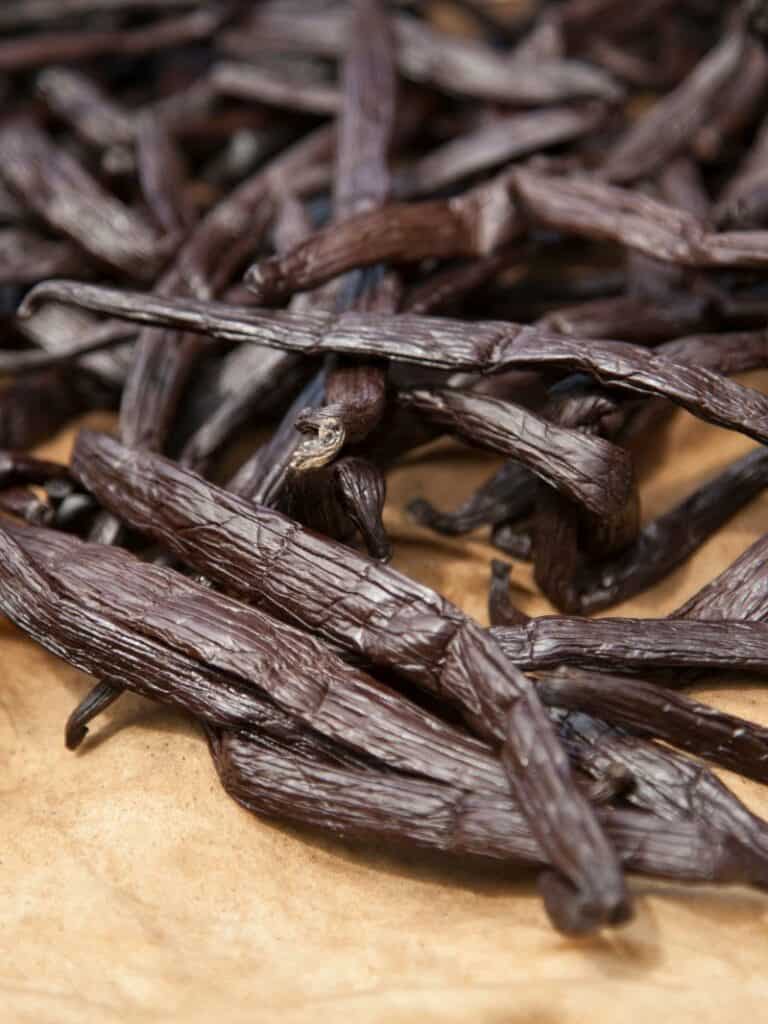
From Tahiti, this vanilla has a floral and fruity flavor with notes of cherry and licorice. It is often used in perfumes and other beauty products.
Mexican vanilla
This vanilla has a robust, spicy flavor and a woody, smoky aroma. It is often used in savory dishes and chocolate.
Ugandan vanilla
This type of vanilla has a unique smoky flavor with a hint of bourbon.
Vanilla Forms
Vanilla is available in several forms, each with unique properties and uses.
Here are some of the most common forms of vanilla:
Vanilla extract
Made by soaking vanilla beans in alcohol and water, vanilla extract is used most in baking and cooking. It has a robust and concentrated flavor is usually sold in small bottles.
Vanilla powder
This is made from ground vanilla beans and is often used as a natural flavoring in health supplements and protein powders. It can also be used as a substitute for vanilla extract in recipes.
Vanilla paste
This blend of vanilla extract, vanilla beans, and sugar has a thick, syrupy texture. In recipes, it is an excellent substitute for vanilla beans and can add a rich, intense vanilla flavor to desserts and other dishes.
Flat-leaf vanilla, native to Mexico, is the only orchid species that produces edible fruit.
This rich Madagascar Vanilla Bean Paste will solidify your status as a master p tissier.
It lends a gourmet appearance and round, delicious flavor to homemade ice cream, custards, creme brulee, and frosting.
Vanilla sugar
This is made by mixing granulated sugar with vanilla extract or vanilla beans. It can add a subtle vanilla flavor to baked goods, beverages, and other recipes.
After a long affair, she grew up and fell out of love with... sugar cookies.
That is until she discovered this unique and delicate blend of lavender vanilla sugar.
It is also fantastic on French toast.
Vanilla bean
This is the whole pod of the vanilla orchid, which can be split open to reveal the tiny black seeds inside. Vanilla beans are often used in recipes that require a robust and aromatic vanilla flavor, such as ice cream and custard.
Each form of vanilla has unique advantages and uses, so choosing the right form for your needs is essential.
Culinary Uses Of Vanilla: From Sweet To Savory
Vanilla is not only synonymous with sweet desserts but is also a key ingredient in savory dishes. It enhances the flavor of many dairy products, like ice cream and custard.
Additionally, it’s not just used in the sweet arena; French chefs often use it to give their custard a delightful flavor.
Vanilla is usually paired with chocolate desserts, strawberries, raspberries, and other tropical fruits.
It’s also commonly used to add depth and richness to coffee-based desserts such as tiramisu or zabaglione – a delicious Italian dessert made with Marsala wine and mascarpone cheese.
Of course, vanilla can also be used for baking. Whether you are making a cake, cookies, or any other type of dessert, adding a few drops of good-quality vanilla extract will surely add an extra flavor edge.
Vanilla is a beloved flavor in the world of desserts and is used in a wide range of sweet treats.
Here are some popular desserts that feature vanilla:
Vanilla ice cream
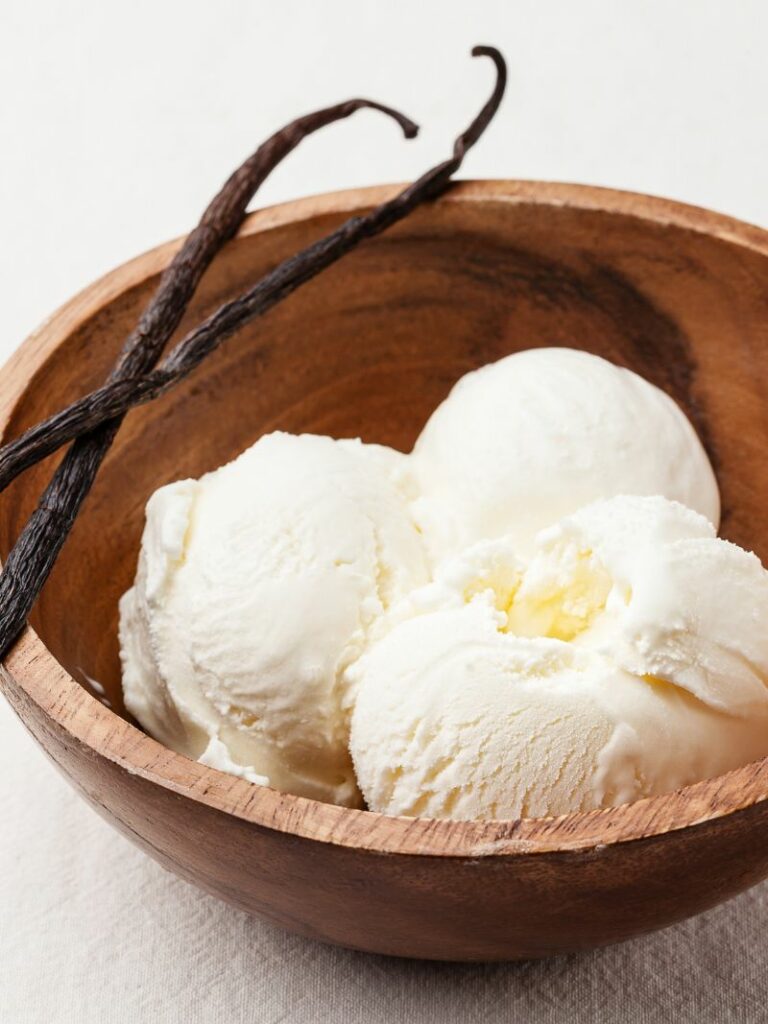
One of the most classic and famous ice cream flavors is made with a custard base flavored with vanilla extract or vanilla bean.
Vanilla cupcakes
These are small, individual cakes flavored with vanilla extract or vanilla bean and often topped with vanilla buttercream frosting.
Vanilla pudding
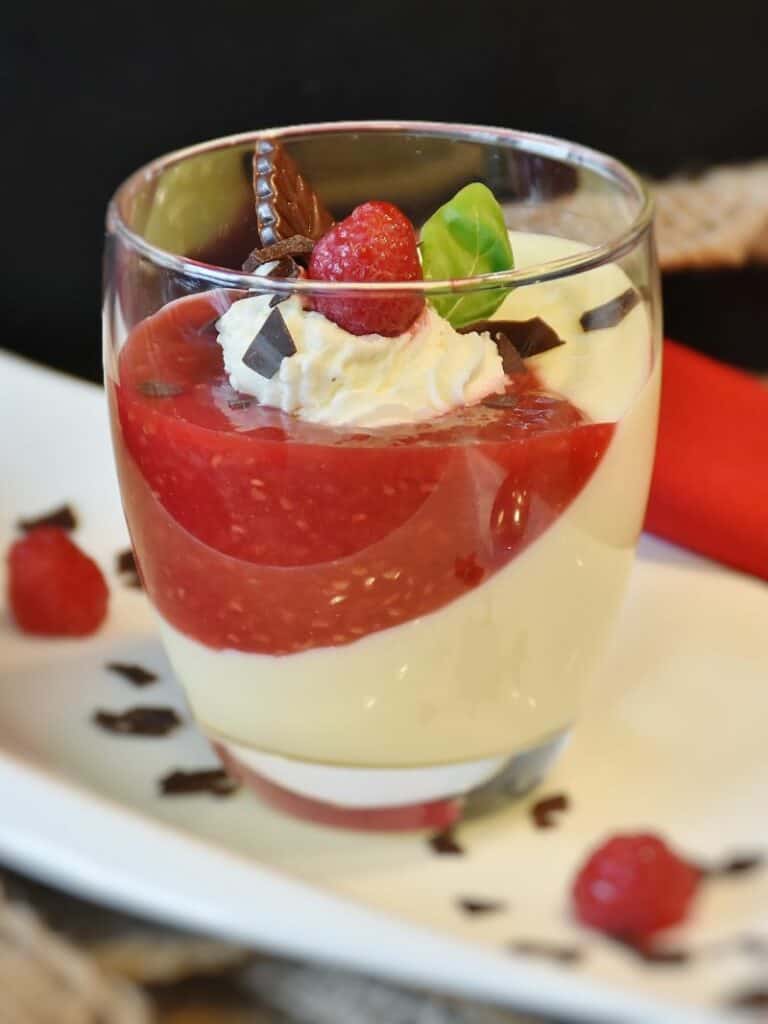
A creamy, smooth dessert made from a vanilla-flavored custard base, often served with whipped cream and fresh fruit.
Vanilla cake
A classic cake flavor that can be made with vanilla extract or vanilla bean and is often topped with vanilla buttercream frosting.
Crème brûlée
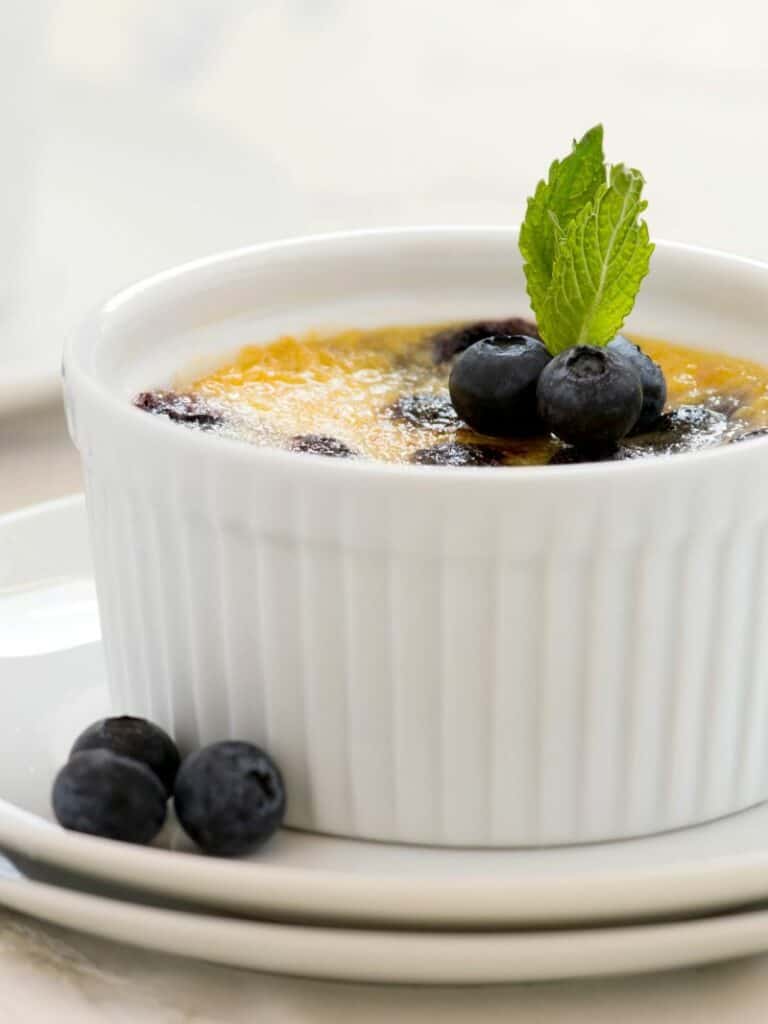
A rich, custard-based dessert flavored with vanilla bean and topped with a layer of caramelized sugar.
Vanilla macarons
These are small, delicate cookies made from almond flour and flavored with vanilla extract or vanilla bean. They are often filled with a sweet, creamy filling like vanilla buttercream.
Vanilla milkshake
A cold, creamy drink made with vanilla ice cream and milk, flavored with vanilla extract or vanilla syrup.
Tips and Tricks When Cooking or Baking with Vanilla
Cooking and baking with vanilla can be a fun and rewarding experience, but it’s important to use the right techniques to get the most out of this delicious flavor.
Here are some tips and tricks for cooking and baking with vanilla:
- Use high-quality vanilla: The quality of the vanilla you use can make a big difference in the flavor of your final product. Look for plump, moist, and aromatic pure vanilla extract or whole vanilla beans.
- Use the right amount: Vanilla can quickly overpower other flavors if you use too much. Generally, use 1 teaspoon of vanilla extract for every 1 cup of flour or liquid in a recipe.
- Scrape the vanilla bean: If you’re using vanilla beans, scrape out the tiny black seeds inside. These seeds are packed with flavor and aroma and can be used in place of or in addition to vanilla extract.
- Store vanilla properly: Vanilla extract and beans should be stored in a cool, dark place, away from heat and light. Once opened, the vanilla extract should be used within 1 year, while whole vanilla beans can last several years if stored properly.
- Add vanilla to the right ingredients: Vanilla extract should be added to wet ingredients like eggs, milk, and butter, while vanilla beans can be added to wet and dry ingredients.
- Experiment with different forms of vanilla: Try using vanilla paste or vanilla powder instead of vanilla extract or beans for a different flavor and texture.
Following these tips and tricks, you can get the most out of your vanilla and create delicious, flavorful dishes that delight your taste buds.
Vanilla Substitutes
While vanilla is a beloved flavor, it’s not always available or affordable. Fortunately, there are several substitutes you can use in recipes that call for vanilla.
Here are some common vanilla substitutes:
Maple syrup
Maple syrup has a sweet, complex flavor that can replace vanilla in recipes like pancakes, waffles, and oatmeal.
Almond extract
This flavor is similar to vanilla and can be used in equal amounts in recipes. It’s perfect in recipes that feature nuts or fruit.
Coconut milk
Coconut milk has a creamy, sweet flavor that can replace vanilla in recipes like smoothies, puddings, and curries.
Honey
Honey has a sweet, floral flavor that can replace vanilla in recipes like baked goods and dressings.
Citrus zest
Lemon or orange zest can add a bright, citrusy flavor to recipes that call for vanilla. Use the zest of 1 lemon or orange instead of 1 teaspoon of vanilla extract.
Other spices
Cinnamon, nutmeg, and cardamom can all be used to add warmth and flavor to recipes that call for vanilla.
When using a substitute for vanilla, it’s important to remember that the flavor and aroma may not be the same as vanilla. You may need to experiment with different substitutes to find the one that works best for your recipe.

